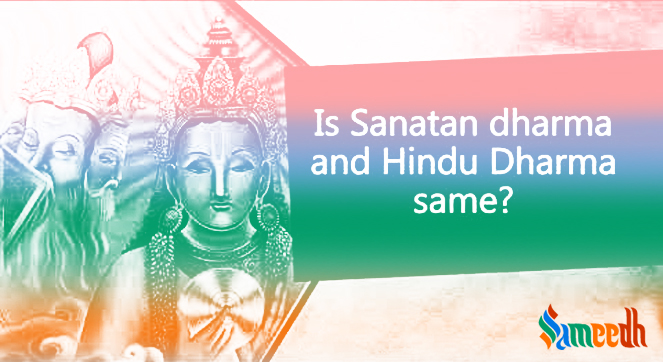Sanatana Dharma and Hinduism are often used interchangeably to refer to the religious and cultural traditions of the Indian subcontinent. However, there are some subtle differences in their meanings.

Is Sanatan Dharma and Hinduism Same?
Sanatana Dharma and Hinduism are often used interchangeably to refer to the religious and cultural traditions of the Indian subcontinent. However, there are some subtle differences in their meanings.
Sanatana Dharma is a Sanskrit term that translates to “eternal or everlasting dharma.” It encompasses a broader concept than Hinduism alone. Sanatana Dharma refers to the timeless and universal principles and laws that govern the entire cosmos, including the moral, ethical, and spiritual duties of individuals. It is seen as the eternal and natural way of life that leads to spiritual liberation.
Hinduism, on the other hand, is a term coined by outsiders to categorize the religious and cultural practices of the people living in the region of the Indus River, which is present-day Pakistan. Hinduism is more of a modern-day umbrella term used to describe the diverse religious, philosophical, and cultural traditions that have evolved in the Indian subcontinent over thousands of years. It encompasses a wide range of beliefs, practices, rituals, and sects.
In essence, Sanatana Dharma refers to the underlying principles and cosmic order that Hinduism, as a religion, seeks to follow. While Hinduism includes the specific practices and beliefs of various sects and communities, Sanatana Dharma represents the universal and timeless aspects of the tradition.
It’s important to note that the distinction between Sanatana Dharma and Hinduism can vary depending on different interpretations and perspectives. Some people may use the terms interchangeably, while others may emphasize the philosophical and spiritual aspects of Sanatana Dharma over the more organized religious aspects of Hinduism.